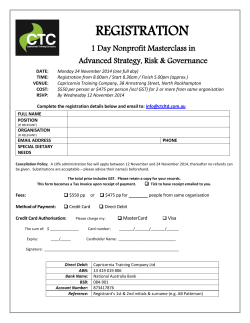
MANPOWER PLANNING
MANPOWER PLANNING INTRODUCTION Planning for human resources is the most important managerial functions. For adequate supply, proper quantity, quality and effective utilization of human resources. In under developed countries- shortage of trained managers. MEANING AND DEFINITION By David Decenzo “HRP is the process by which an organisation ensures that it has the right number and kind of people at the right place and time capable of effectively and efficiently meeting the org. plans and objectives. It translates the org. plans and objectives into the right number and kind of workers required to meet those objectives. Activities in human resources planning Forecasting future manpower requirements Inventory of present resources Anticipating manpower problems Planning necessary programmes FEATURES OF MANPOWER PLANNING Well defined objectives Determining personnel needs Having manpower inventory Adjusting demand and supply Creating proper work environment NEED FOR MANPOWER PLANNING Replacement of persons Labour turnover Expansion plans Technological changes Assessing needs PROCESS OF HUMAN RESOURCE PLANNING A) B) DECIDING GOALS AND OBJECTIVES ESTIMATING FUTURE MANPOWER REQUIREMENTS Likely trend in economic environment Development in industry Work load Analysis Work force analysis C) MANPOWER INVENTORY D) PLANNING JOB REQUIREMENTS & JOB DESCRIPTIONS Job identification Nature of the job Operations involved in doing the job materials and equipment required to do the job Personnel qualities required to do the job Relation of the job with other jobs in the organisation E) DEVELOPING A HUMAN RESOURCE PLAN FACTORS AFFECTING MANPOWER PLANNING Existing stock of manpower Wastage Future manpower requirements TYPES OF MANPOWER PLANNING SHORT TERM MANPOWER PLANNING Problems faced in short run are The weak incumbent- Approaches for matching jobs and individuals 1. Changing of the man 2. Change in the contents of the job 3. Changing the job and the man 4. Removal of the incumbent The strong incumbent- Approaches 1. Assigning additional duties 2. Assigning some special problems 3. Advice 4. Change in job An unexpected vacancy Long term manpower planning- elements a) Projecting manpower requirements b) Taking stock of existing manpower c) Recruitment and selection BENEFITS OF MANPOWER PLANNING Reduced labour costs Optimum utilisation of manpower force Identification of gaps in existing manpower Improvement in overall business planning Career succession planning Creates awareness in the organisation Growth of the organisation Beneficial to the country PROBLEMS IN MANPOWER PLANNING Accuracy of forecasts Identity crisis Support of top management Resistance from employees Insufficient intial efforts Management information system Uncertainties Expensive and time consuming Coordination with other managerial functions Unbalanced approach
© Copyright 2025

















